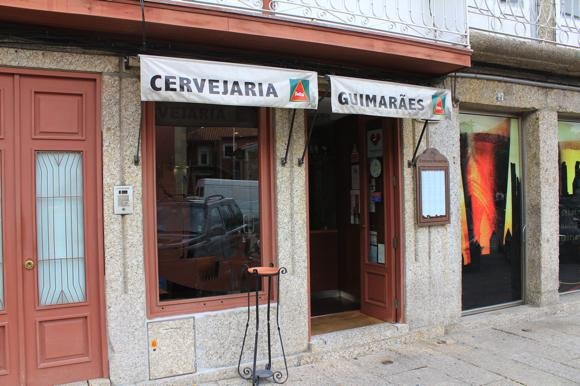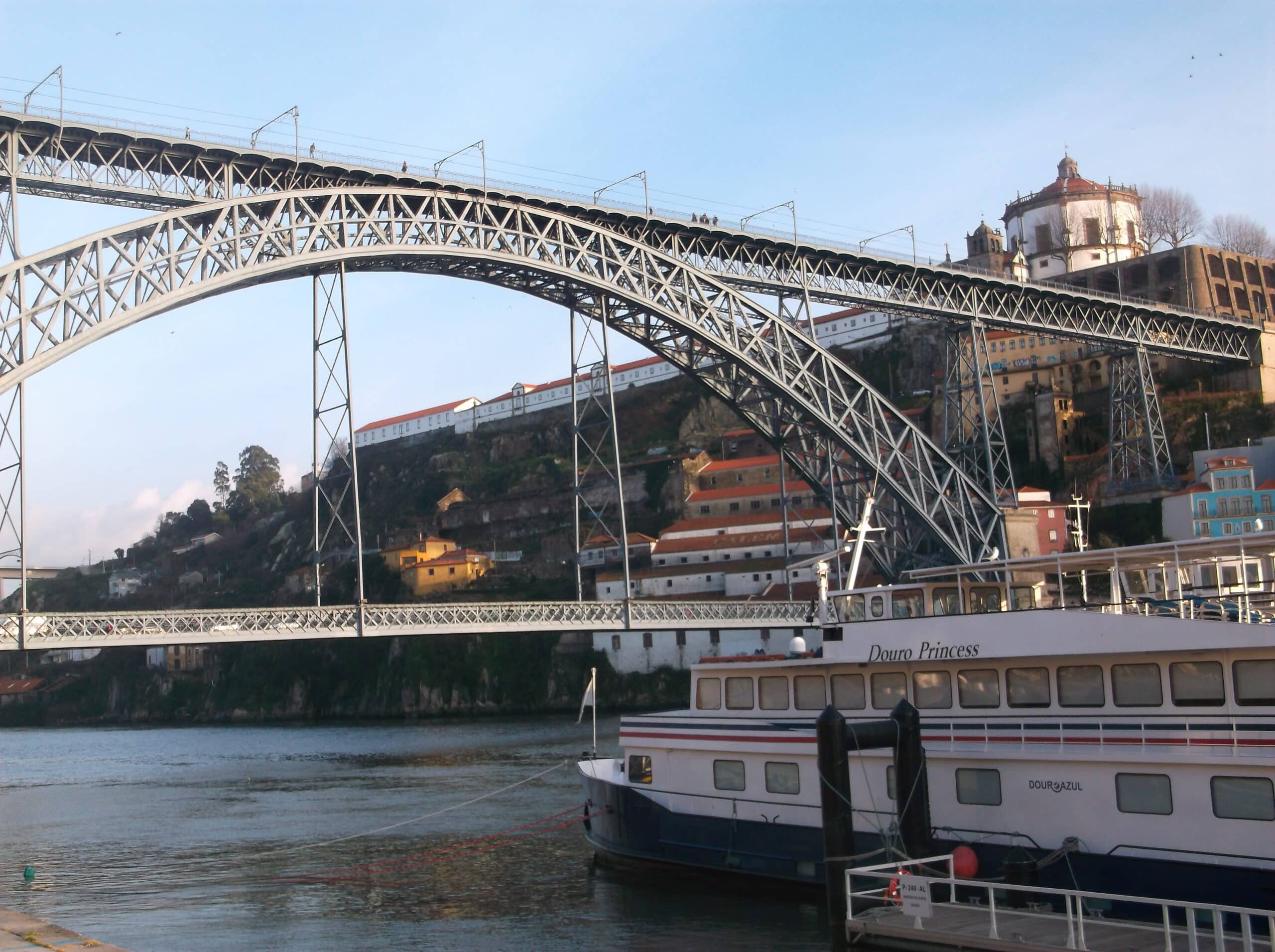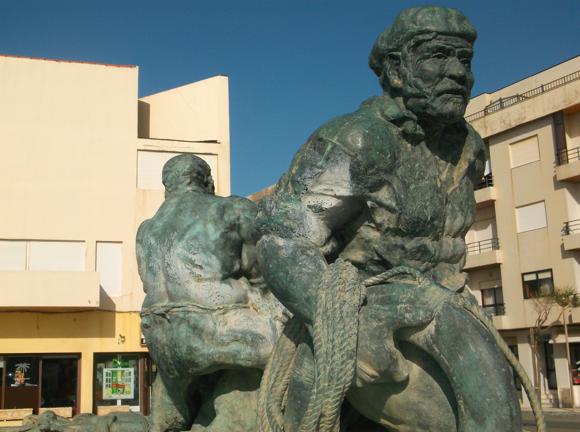Teams, tales and tips – a guide to the local game
The cradle of the Portuguese nation, bordering Braga in the northern province of Minho, Guimarães (‘Gwim-a-raish’) finds itself forever challenging its neighbour for tourist euros, cultural funding and football fans.
Even today, there is no railway line between these two major cities of the north – separate branch lines run from Porto just over 50km away.
Flagship club Vitória Guimarães are still just ahead of bitter Minho rivals Sporting Braga in terms of average attendances. But only just. With Braga reaching a European final and claiming a runners-up spot in the Primeira Liga in recent seasons, as well as twice competing in the Champions League group stage, the Conquistadores of Vitória are most certainly on the back foot.
As for victories in the Dérbi do Minho, it’s Braga.

Even in terms of stadia, Braga wins out, its Estádio Municipal a dramatic feat of engineering carved into sheer rock face, created for Euro 2004. The ground at Guimarães, named after the first king of Portugal, locally born Dom Afonso Henriques, is a modern, functional remodel of the municipal venue opened in 1965.
Before then, Vitória (aka VSC) played at five different local grounds. Founded in 1922 – although there are records dating back to 1913 – VSC were inaugural members of the Braga Football Association.
The Dérbi do Minho quickly became established as the key fixture of the season, even after Braga FA teams were accepted in the national league from 1941-42 onwards. Neither has really come close to winning the Portuguese title, although Braga claimed runners-up spot in 2010.

Each northern rival was chosen as a venue city for Euro 2004. The Estádio D Afonso Henriques reconfigured into a 30,000 all-seater, Guimarães hosted its first international in September 2003, a 3-0 defeat to Spain.
Four months later, tragedy struck at the stadium when Hungary and Benfica forward Miklós Fehér suffered a cardiac arrest towards in the end of a league game with Vitória. The match was being screened live, and the desperate scenes to revive Fehér will forever be associated with Guimarães. A solemn ceremony takes place each time Benfica visit.
The following summer, the stadium staged two Euro 2004 games, remembered for two late goals: one by Antonio Cassano that gave Italy victory over Bulgaria and one by Sweden’s Mattias Jonson that knocked Italy out of the tournament at the very same time over at Boavista.

Portugal have since played three internationals here, one a 4-4 draw with Cyprus, the other a 4-0 win over Malta in front of a near full house.
Stuck out in the north-west of the city, the stadium feels disconnected from town. You can stroll around Largo da Oliveira in the heart of town and not realise there’s a major football club up the road. This is a World Heritage Site – and that’s why people come here.
All the same, little Vitória bars, evidence of a football culture stretching back a century, are dotted here and there. It’s just a case of finding them.
Getting Around
Arriving in town, local transport and timings

The nearest airport is Porto Sá Carneiro 51km (32 miles) away. From outside Arrivals, to the right you exit, Get Bus runs seven times a day to Guimarães bus station(50min journey time, €8 single/€14 return).
The bus station is south-west of the centre on Alameda Dr Mariano Felgueiras, near the Ibis hotel. It’s a reasonably short but sometimes steep walk to both town and ground, along Avenida Conde de Margaride.
The hourly train from Porto São Bento (€3) takes 1hr 15mins, also calling at Porto Campanhã. From Lisbon Santa Apolónia, you’ll need to change in Porto – the occasional direct service takes 4hrs. A single fare is €25-€35.
Guimarães train station is south of town, a straight 10min walk up Avenida Dom Afonso Henriques. The stadium would be a bit of a stretch from there.
The centre of town is historic and pedestrianised. The limited local bus service is run by Transurbanos de Guimarães (TUG), tickets on board €1.74, coins preferred, change given. From the train station, the Linha Cidade runs every 30min until early evening. Towards town, it runs up Avenida Dom João IV, not in the general direction of the stadium. Coming back, it calls at the stadium, then the bus station, taking Avenida Dom Afonso Henriques to the train station.
Taxis Unidos (+351 253 525 252) is based just behind the train station and offers airport transfers – expect to pay around €60 from Porto airport.
Where to Drink
The best pubs and bars for football fans








Terrace cafés and bars line Largo da Oliveira and adjoining Praça de São Tiago – Guimarães is a student town, lively in term-time.
A younger crowd drifts to the Praça de São Tiago, drinking at El Rock Bar, a hang-out for Vitória’s White Angels supporters on match days, and movie-themed Cinecitta, whose recent 20th anniversary party filled half the square.
A more grown-up clientele sips fine wines at Rolhas & Rótulos and cocktails at its partner Zero Graus.
Running alongside, hostelry-lined Rua Rainha Dona Maria II contains the student-friendly Salado Bar and the Praça-Vimaranes Pub, with its manifold German, Belgian and Irish beers. Parallel on Rua Egas Moniz, at No.62, the Sede Egas Moniz is the central (but tiny) bar of the Vitória’s White Angels supporters’ group, festooned with flags on match days.






Further round on Largo do Toural, the Café Milenário at No.47 hasn’t changed since Eusébio’s day – head downstairs for billiards – while the Cervejaria Martins at No.35 is a wonderful football spot, decked out in scores of scarves, on the ceiling and under bar-table glass.
Just off Toural, the Cervejaria Guimarães on Largo da Misericórdia is a friendly football haunt while the Bar Danúbio (Avenida Dom Afonso Henriques 15) gives equal wall space to Vitória scarves and images from Guimarães history, along with a TV invariably showing football. It’s a small, free-standing building whose terrace catches the sun.
Match action can also be enjoyed at the rustic Taberna Trovador on nearby Largo do Trovador.
Where to stay
The best hotels for the stadium and city centre



Turismo Guimarães has a database of local hotels.
Guimarães is dotted with individual, independent hotels in the lower- and mid-price ranges, with a couple of chains thrown in.
The closest to the stadium is the cheap, friendly São Mamede, the kind of place that’s dying out all over Europe. En-suite rooms on the fourth and fifth floors (it’s a climb) are adequate for a short stay. The rate includes a modest breakfast, taken in a room with a panoramic view of the town.
Also close, on the west side of town, the EMAJ is a boutique hotel, filling a stately, high-ceilinged bank on focal Largo do Toural with contemporary rooms and suites. Noon check-out and free, if limited, parking are handy features. On the other side of the Largo, the Hotel Toural is somewhat ambitiously rated a four-star, its 30 rooms closer to a three rating, but comfortable nonetheless. Each has TV sport and a mini-bar.




By the bus station, so also walkable to the stadium, the ibis Guimaraes Centro offers a convenient location and standard budget-chain rooms.
Right in the historic centre, the Hotel da Oliveira is a genuine four-star, its somewhat clunky claim of being ‘the most important charming hotel in Guimãraes’ actually true. A savvy design helps, plus the HOOL restaurant.
Lodgings cluster around the train station, starting with the superior Hotel de Guimarães, probably the best hotel in town, with its spa, heated pool, gym, piano bar and restaurant. Rising high nearby, the Fundador was completely refurbished in 2016, its 70 rooms and breakfast area offering superb views from several floors up.
The budget choice is the Hotel D João IV, 14 simple en-suite rooms behind a striking façade of wrap-around balconies.














